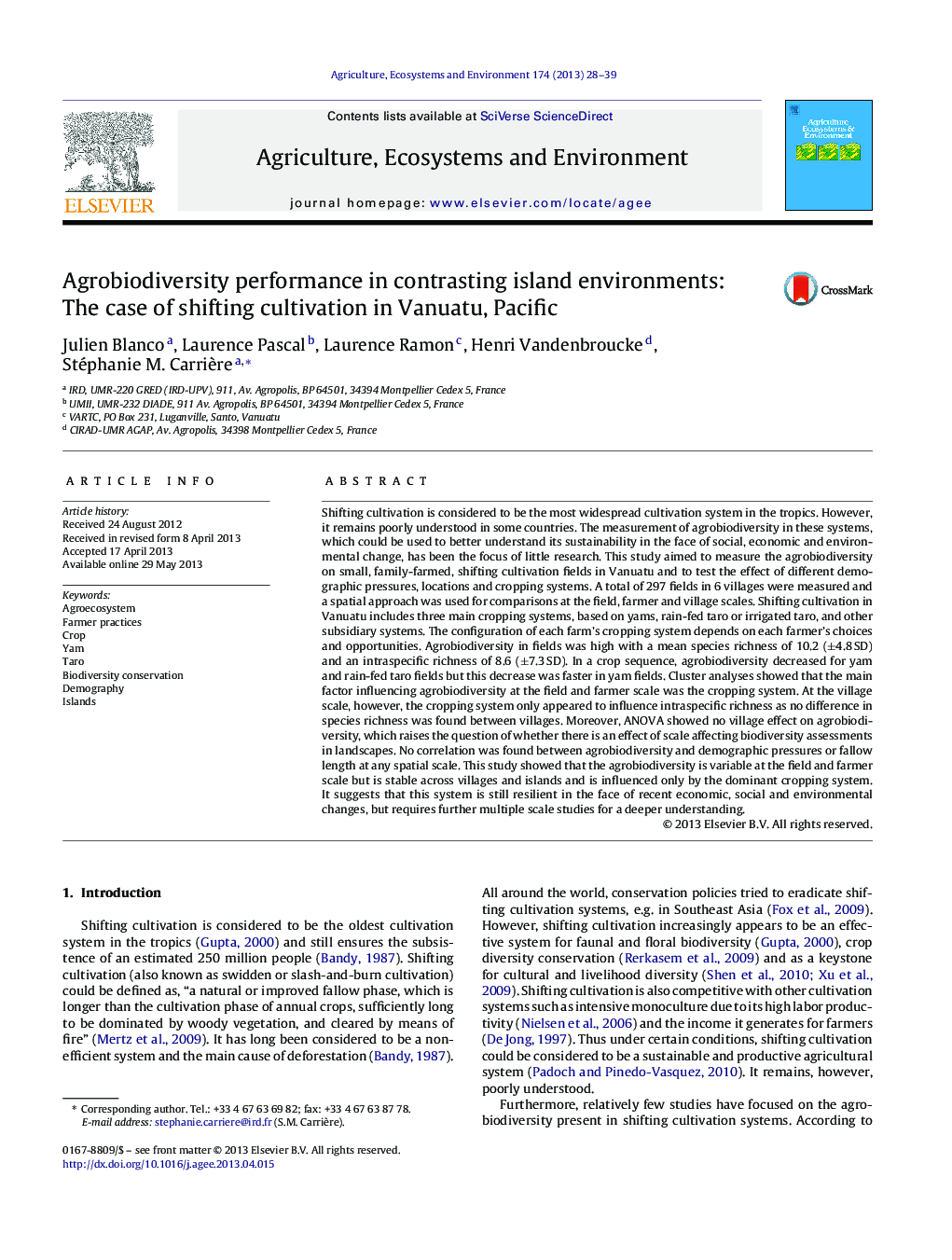| کد مقاله | کد نشریه | سال انتشار | مقاله انگلیسی | نسخه تمام متن |
|---|---|---|---|---|
| 2414212 | 1552078 | 2013 | 12 صفحه PDF | دانلود رایگان |

• We measured species and varieties agrobiodiversity in six villages in Vanuatu.
• We compared agrobiodiversity at field, farmer and village scales.
• Agrobiodiversity was influenced by the cropping system at the three spatial scales.
• No correlation was found between agrobiodiversity and demographic pressures.
Shifting cultivation is considered to be the most widespread cultivation system in the tropics. However, it remains poorly understood in some countries. The measurement of agrobiodiversity in these systems, which could be used to better understand its sustainability in the face of social, economic and environmental change, has been the focus of little research. This study aimed to measure the agrobiodiversity on small, family-farmed, shifting cultivation fields in Vanuatu and to test the effect of different demographic pressures, locations and cropping systems. A total of 297 fields in 6 villages were measured and a spatial approach was used for comparisons at the field, farmer and village scales. Shifting cultivation in Vanuatu includes three main cropping systems, based on yams, rain-fed taro or irrigated taro, and other subsidiary systems. The configuration of each farm's cropping system depends on each farmer's choices and opportunities. Agrobiodiversity in fields was high with a mean species richness of 10.2 (±4.8 SD) and an intraspecific richness of 8.6 (±7.3 SD). In a crop sequence, agrobiodiversity decreased for yam and rain-fed taro fields but this decrease was faster in yam fields. Cluster analyses showed that the main factor influencing agrobiodiversity at the field and farmer scale was the cropping system. At the village scale, however, the cropping system only appeared to influence intraspecific richness as no difference in species richness was found between villages. Moreover, ANOVA showed no village effect on agrobiodiversity, which raises the question of whether there is an effect of scale affecting biodiversity assessments in landscapes. No correlation was found between agrobiodiversity and demographic pressures or fallow length at any spatial scale. This study showed that the agrobiodiversity is variable at the field and farmer scale but is stable across villages and islands and is influenced only by the dominant cropping system. It suggests that this system is still resilient in the face of recent economic, social and environmental changes, but requires further multiple scale studies for a deeper understanding.
Journal: Agriculture, Ecosystems & Environment - Volume 174, 15 July 2013, Pages 28–39